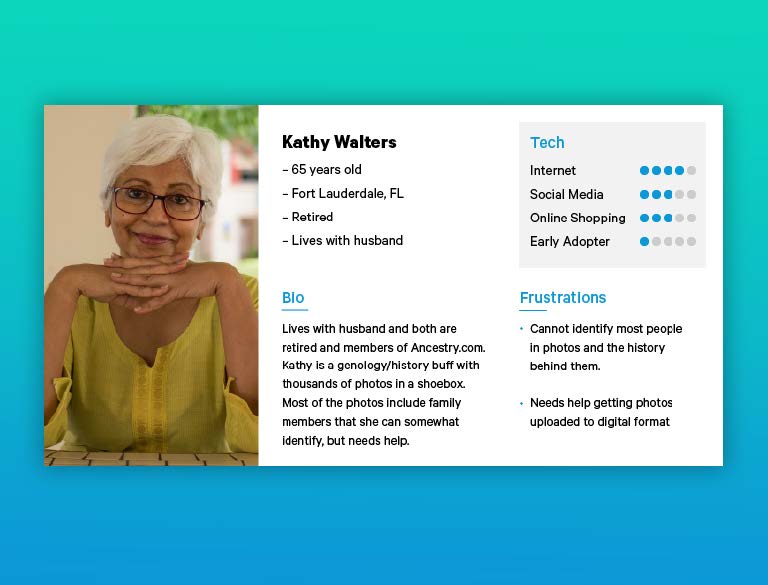
Stop Creating User Personas
Too many assumptions are made ahead of creating different user personas.
I once worked on a project designing an app that would allow users to take historical photographs, upload them to the platform, and share with designated groups of the users’ choosing. You could then utilize that group of family, friends, co-workers, etc. to help add detail to those memories – like a social scrapbooking app.
We assumed it would be utilized primarily by families to help categorize photos. We thought they would use the platform to add details and make the entire album of photographs more valuable to everyone once the information was completed.
Our UX team put together a list of user personas in preparation for designing and building the app. I mean, we know exactly who is going to be using this thing, right? We know it will be an older crowd with all of these historical photos that they will want to document before older generations are no longer around.
So, we made several personas that looked something like this:

Based on these solid user personas, we created Jira tickets, planned out sprints & backlog items, and started designing. We built an entire platform, complete with cool sign-up forms and an enticing user interface. With months of development behind us, we were finally ready to showcase our product, do a few user tests, and really validate that we knocked it out of the park.
Time for User Testing
The first person (our “Kathy”) comes in. We know Kathy well. She is going to be thrilled that we solved her long-burning need to organize her shoebox filled with photos she knows nothing about. Kathy started using the platform, got familiar with the features, and immediately said that she would…not want to use this tool for the purpose we designed it. Instead, Kathy would like to use it for her daughter’s ski team. Instead of scrapbooking, our Kathy seems to want an event recap app.
Kathy wasn’t alone. Every tester who ran through the tutorial had their own unique idea of how they would use our platform – and none of them wanted to archive family photos.
So, what now? Do we pivot and start adapting our tool to appease those testers? We could just re-write the user personas to fit our needs, but then what was the point in creating them in the first place?

The Problem with Creating User Personas
User personas aren’t necessarily a waste of time. The problem with creating user personas is that they typically are made to satisfy your assumptions before asking real users what they want and the pain they need to be solved. In the historical photograph example, we failed to consider the user’s familiarity with technology and their level of concern with overall privacy (i.e., who could view their personal photographs). These items could have been addressed if we spent a little time doing up-front user research, prototyping, testing, and iterating before a line of code was written.
There are several challenges of creating user personas.
- Different people under the same persona will behave differently.
- Too many assumptions are often made ahead of creating personas.
- Personal characteristics do not directly determine behavior.
Where to Focus Instead
Spend your time gaining clarity on the tasks that frustrate your users and how you can utilize your platform to delight them instead. Gathering insight into a user’s actual goals, priorities, and concerns is a much greater use of time and will give UX a clear picture of what “needs” to be created.
Ultimately, if the goal for setting up various personas is to create empathy with your potential users, what benefit does it provide to make a fictional person with goals you determined on their behalf?
People use a product to accomplish a specific job – even if that job is just to be entertained. The goal with any product should be to accomplish a specific task with the least friction possible. People use a singular product for very different reasons to perform very different jobs. How can you find out what jobs they’re trying to accomplish? Ask them.
Steve Bubb is a Senior UX /UI Designer at Concord.